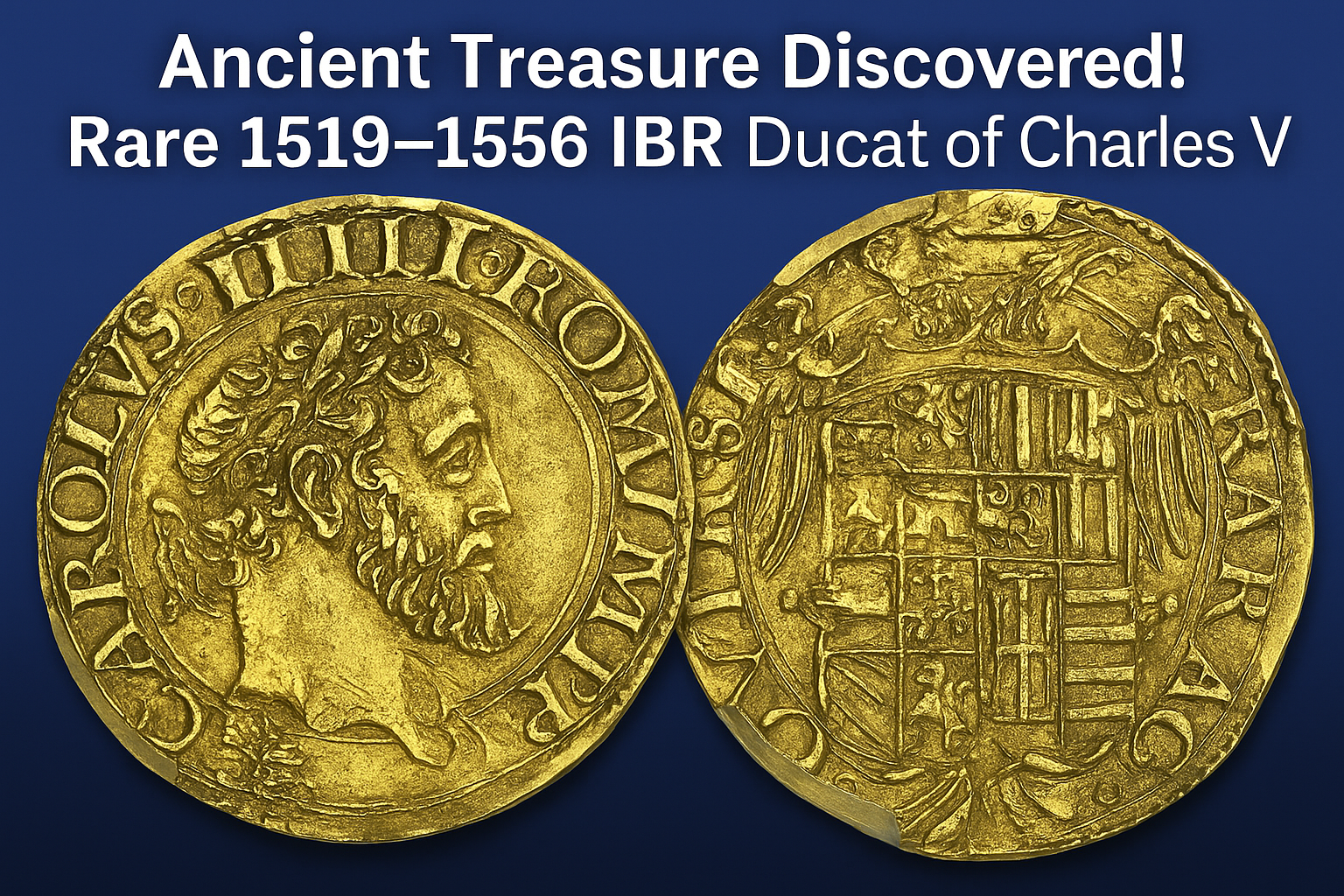Discovering Imperial Gold: The Rare 1519–1556 IBR Ducat of Emperor Charles V

In the exclusive world of rare coin collecting and historical investment assets, few coins rival the mystique and prestige of the IBR Ducat minted between 1519 and 1556. This exceptional gold coin, struck under the reign of Holy Roman Emperor Charles V, is a shining relic of Renaissance Europe—both literally and historically. For those seeking a tangible connection to history and a solid store of value, this coin offers both in one powerful artifact.
Let’s explore why the IBR Ducat (Fr-834, MIR-131, MS62) is one of the most compelling opportunities in the modern collectible market.
1. A Portrait of Power: The Story Behind the Coin
The IBR Ducat is more than just gold—it’s a bold statement of imperial authority and artistic mastery. Issued in Naples during the twilight of Charles V’s rule, this coin bears his laureate bust in armor, symbolizing military might and divine authority. The reverse displays the imperial double-headed eagle, crowned and bearing the royal arms of the Spanish Empire.
The 'IBR' monogram engraved on the obverse isn't just decoration—it refers to Giovan Battista Ravaschieri, the master of the Naples Mint from 1548. His initials represent a seal of quality, signaling his direct supervision over the coin's production. Struck in nearly pure gold, weighing approximately 3.4 grams with a diameter of 22mm, the coin was never intended for mass circulation. It was crafted for tribute, prestige, and imperial pride.
This ducat encapsulates the vast reach of Charles V's realm, who ruled over Spain, the Holy Roman Empire, Naples, Sicily, and the Americas. As the last emperor crowned by a pope, his reign marked the intersection of medieval tradition and the dawn of the modern age.
2. Rarity and Investment: Why This Coin Matters Today
Coins like the IBR Ducat don’t just tell a story—they preserve value, often outperforming more traditional investment vehicles in terms of stability and appreciation. As of 2025, auction records show that MS62-graded specimens have fetched upwards of ¥825,803 (approx. $5,300 USD), with top-graded coins reaching over $7,000 at major houses like Heritage Auctions and Stack’s Bowers.
Why such demand?
-
Extreme rarity: Coins from this short-lived series (1548–1556) were minted in very limited numbers, many lost or melted over centuries. Certified surviving examples are few and highly sought after.
-
High condition: MS62 represents a mint-state coin with minimal handling or flaws. It’s rare for a 16th-century coin to survive in this grade.
-
Historic appeal: Collectors of Habsburg, Renaissance, or Holy Roman Empire coinage find this ducat irresistible—especially those who seek coins with deep narrative and museum-level provenance.
With gold prices climbing and interest in alternative investments growing among high-net-worth individuals, coins like this provide portfolio diversification with a strong historical hedge. You don’t just buy a coin—you acquire a slice of imperial prestige.
3. Legacy, Symbolism, and Cultural Significance
The IBR Ducat carries layers of symbolism:
-
The double-headed eagle represents dominion over East and West—an ancient imperial emblem from Byzantium to Vienna.
-
The laurel-crowned emperor invokes Roman ideals of victory, continuity, and divine right.
-
The monogrammed signature from the mint master turns the coin into a piece of signed Renaissance art.
This is not merely a 'coin'—it is a political message, a work of art, and a rare collectible all in one.
Today, these coins are often housed in elite private collections or national museums. When they do appear at auction, it is a rare and often competitive occasion. For collectors with an eye for history, aesthetics, and asset preservation, this coin is a perfect trifecta.
Final Thoughts: A Golden Opportunity
The IBR Ducat of Charles V stands out as one of the most desirable Renaissance-era coins in today’s numismatic landscape. Whether you're a seasoned collector, a historical enthusiast, or a savvy investor looking for solid appreciation potential, this coin offers both timeless beauty and long-term value.
Opportunities to acquire pieces like this are limited—and growing rarer by the year. When one surfaces in mint condition with pedigree, it's a moment not to be missed.
Holding a 16th-century imperial coin isn't just owning gold—it's holding history.
Looking to acquire your own piece of Habsburg glory?
Reach out for curated recommendations or exclusive offerings in the rare coin space.
